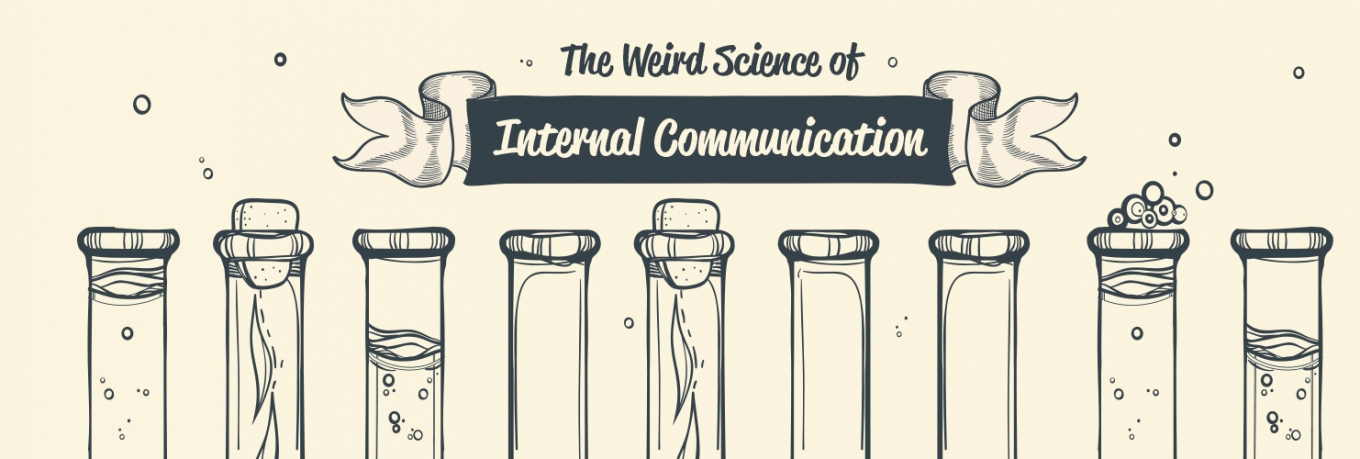Who’d have thought a simple game of tapping and listening would explain a frequent challenge facing internal communicators? Yet it’s just one example of how behavioural science can support us, either by informing our recommendations, or giving evidence to support them.
Internal communications can sometimes feel like a daily struggle to persuade colleagues of the value of our ideas. Evaluation and measurement can help, but data isn’t always available. Science gives us another formidable ally.
With science firmly in your corner you’ll feel more confident when championing your approach. So let’s start with those tappers…
Defeat the curse of knowledge
Stanford psychologist Elizabeth Newton ran a fascinating experiment in 1990 to demonstrate a powerful cognitive bias: the curse of knowledge.
She split volunteers into two groups: tappers, and listeners. The tappers were asked to tap out the rhythm of well-known songs on the table. The listeners had to guess what the songs were.
Before the game, the tappers predicted the listeners would get 50% correct. But in the event, the listeners identified just three of the 120 songs tapped out – a mere 2.5%.
As the tappers already had the tune in their head, they found it hard to imagine not being able to recognise it. The more we know something, the less able we are to imagine what it feels like not to know it.
As internal communicators, you’ll spot this bias in others. But we need to guard against it in ourselves too. And the best way to do that is to get as close to your audience as you can.
Keep your messages simple…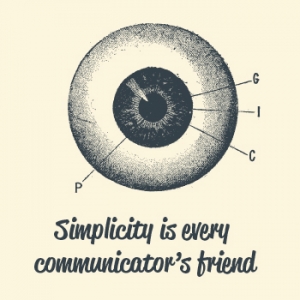
“Simple can be harder than complex,” said former Apple CEO Steve Jobs. “But it’s worth it in the end because once you get there, you can move mountains.”
Simplicity is every communicator’s friend. But keeping messages simple is not just about aiding understanding.
It’s all down to what Nobel prize-winning psychologist Daniel Kahneman calls ‘cognitive ease’. When our brains grasp something more fluently, it becomes more persuasive.
This is also why repetition works so effectively: we’ve evolved to react positively when repeatedly exposed to the same clear messages.
… and make them rhyme
Here’s something to consider when you’re thinking up a tag line for your new campaign.
Researchers in the intriguing field of cognitive poetics have found we’re able to grasp something more fluently if it rhymes. And fluency, as we now know, makes something more persuasive.
For example, the statement ‘Caution and measure will win you riches’ is seen as more true when changed to ‘Caution and measure will win you treasure’.
As author Dan Pink points out, this technique was used to dramatic effect in perhaps the most famous murder trial of all time. When OJ Simpson was unable to squeeze his hand into a bloodstained glove found at the scene, lawyer Johnnie L Cochran closed his defence with the statement: “If it doesn’t fit, you must acquit”.
The rest, as they say, is history.
Make it visual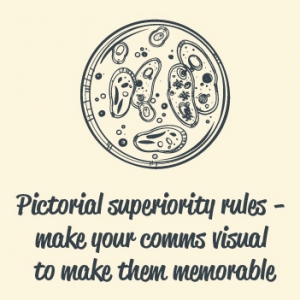
They say a picture’s worth a thousand words. Well, science backs this up. Pictures outdo words every time.
It’s all down to what researchers call the pictorial superiority effect.
In his book Brain Rules, Dr John Medina cites studies showing that if information is presented orally, people remember about 10% of it when tested three days later. But add a picture, and that figure goes up to 65%.
Use numbers wisely
Imagine this scenario from a real life study. You’ve been asked to assess, as a medical professional, whether to discharge a patient, Mr Jones, from a psychiatric hospital. You’re given one of two pieces of information, effectively saying the same thing:
- Mr Jones has a 10% probability of committing an act of violence.
- Of every 100 patients similar to Mr Jones, 10 are estimated to commit an act of violence.
Would the way the figure is expressed make a difference to your judgement? The chances are it would: almost twice as many doctors given the second piece of information denied his discharge.
Expressing numbers in this way conjures a picture of the human impact in a way percentages don’t – and so is more powerful.
Story trumps numbers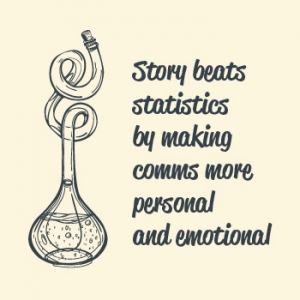
When it comes to persuasion though, numbers are often outgunned by an even stronger tactic: story.
A 2004 study at Carnegie Mellon University tested two versions of charity request letters.
One gave shocking statistics about the plight of children in Africa. The other highlighted the struggle of Rokia, a seven-year-old girl from Mali.
The participants who read about Rokia donated more than twice as much money as those who read the statistics.
When it comes to action, story beats statistics by making the communication more personal and emotional.
Begin with the end in mind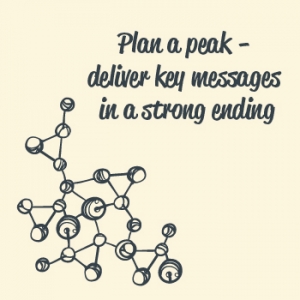
Finally, if you’re planning face-to-face events or presentations, you may want to keep the ‘peak-end rule’ in mind.
According to Kahneman, our minds don’t remember experiences in a linear way. Instead, we over-emphasise the most intense moment of the event (the peak), and what happens at the end.
You can take advantage by planning a ‘peak’ to your event. Use stories, analogies or demonstrations to evoke a strong emotional response from your audience.
Then remember to deliver your key message in a strong ending.
Whilst science may not persuade everyone, it gives us another valuable tool in our armoury. After all, the more we know about the science behind our recommendations, the more we’ll be regarded as trusted experts.
By Dave Wraith for Alive!

